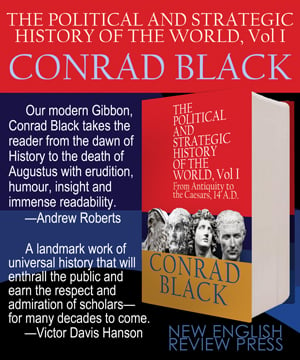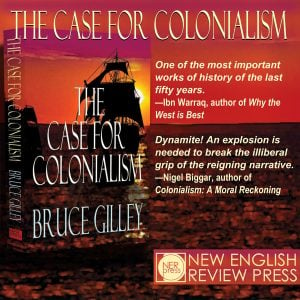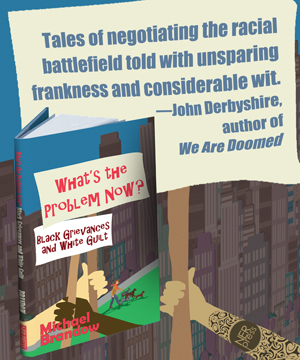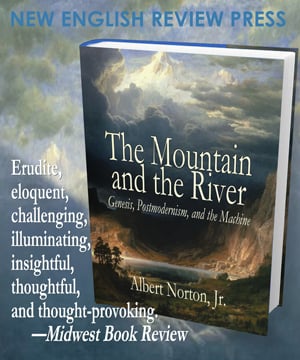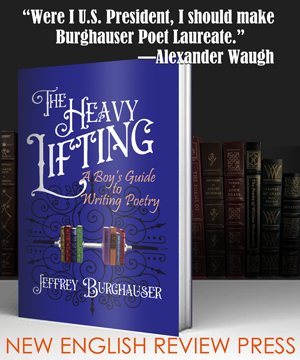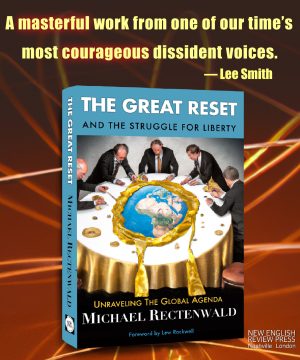by Richard Kostelanetz (December 2013)
Although the creation of a single work of art may be an individual effort, artists have often clustered together to share ideas, offer mutual support, and provide a sympathetic audience for one another. The dynamics of rapid change in artistic styles over the past forty years have required that artists who want to remain current with the latest developments in art be close to the important galleries as well as accessible to others working in their particular field.
—James R. Hudson, The Unanticipated City (1987)
What I experienced in Artists’ SoHo was a cultural hothouse unlike anything anywhere else or any community before in American life. I’d already known about “artist colonies,” to be sure, but this was an urban oasis created by hundreds of artists, if not more, acting independently. Eventually most of us got to know everyone in our buildings as well as many neighbors, as SoHo came to feel more like a residential university campus than a typical urban neighborhood. Most of us worked the majority of our time on our art(s) and never needed to explain to our neighbors that nothing should get in the way of our art-working.
No artists’ colony in the United States was ever so populous, or even half as populous. None before had housed so many people soon-to-be distinguished in not one or two arts but several: painting, sculpture, photography, architecture, performance, dance, playwriting, music, even literature. Esthetically rich, deep, and various this ‘hood certainly was.
As an artists’ colony, SoHo became an educational arena where, thanks to a certain generosity of spirit, young people were inadvertently teaching one another all the time. Living there, at least at the beginning, was an intense learning experience, simply from going to openings, walking through galleries, and listening to my neighbors talk. The SoHo atmosphere was noncompetitive, in part because few of us saw our economies appreciate highly. Whereas painters working in a similar style might have measured themselves against each other, many of us did art so unique that we had no immediate competitors.
In my observation, visual artists more than poets or composers, say, require professional social interaction to learn what cannot be taught in classrooms or gained from journalism about art. That accounts for why historians of painting so often write about groups or why visual artists rarely acknowledge teachers in their professional biographies, in contrast, say, to poets and especially composers, who nearly always do.
Painters and sculptors need to exchange esthetic intelligence and see important new works at first hand, particularly at crucial points in their creative lives. Young visual artists are more inclined to influence each other, if not steal esthetic ideas or technical tricks from each other, than young writers, for instance. For the same reason that, say, Diego Rivera needed to go to Paris before World War I prior to returning to his native Mexico, so ambitious artists from around the world made their way to SoHo in the 1970s. Another institution perhaps peculiar to artists’ communities is Artists Talk on Art, established in SoHo in 1975, where on many Friday nights is a panel addressing a certain theme. (Such weekly gatherings of New York City writers or composers are less likely.)
Painters and sculptors teaching in provincial colleges often rented SoHo lofts for the summertime, Manhattan’s notoriously humid heat notwithstanding, simply to assimilate what could not be learned back home. Aspiring artists who choose not to participate in this kind of art-center educational experience will forever reveal in their art, as well as their discourse, an absence of esthetic moxie. Simply, they didn’t learn what surely not to do. (When their best work transcends mistakes, it is dubbed “outsider art.”) As a de facto anarchist community, the university that was SoHo had no hierarchy, no tests, and no degrees; it had scant connection with the accredited university (NYU) just on the other side of Houston Street.
Another sign of SoHo’s de facto anarchy was the fact that no one planned or expected that it would become an artists’ enclave. City officials certainly didn’t. Nor did any arts institution. Nor did any artists’ conglomerate. Nor did the galleries or major real estate developers. This sometime industrial slum became an art town thanks, I repeat, to the initiative of hundreds of independent individuals who seized a unique opportunity, some of them settling in outright violation of City law, as self-defined anarchists are predisposed to do, often against the advice of their lawyers.
I subsequently met more than one aspiring artist whose lawyers advised against purchasing in an area illegal for living. “You could lose everything,” they advised at the time, looking dumber and dumber in the years since. As artistic aspirations were more likely to enervate outside SoHo, more than once I later thanked my lawyer father’s junior partner, a few years younger than I and then married to a painter, for approving a purchase that might have frightened a more conservative counselor.
Subtly perhaps, SoHo represented the culture of the 1960s without its radical politics (based at the time in anti-war protests). Everyone qualifying for an artist’s variance could live in its co-ops regardless of age, race, gender, political affiliation, sexual orientation, ethnicity, or any other category of discrimination popular in the larger world. No one would have proposed any blanket exclusions, in part because they knew damn well they would be unacceptable. (Nor was “affirmative action” necessary). Besides, no SoHo property owner thought he or she had property with enough value to require protection until the 1980s. Women owned nearly as often as men, and they renovated by themselves as well. In my own co-op, from the beginning at least one-third of the partners have been divorced, unattached women. Approximately one-third of my partners could be called gay.
Though artists are frequently described as predisposed to rabid radicalism (especially by conservative polemicists with fanciful imaginations), most of my neighbors were registered Democrats, not unlike most other New Yorkers, and conservative about property, especially if they owned, as I did, real estate through their co-ops. Though artists forged alliances within the community, no one was ever dubbed the “mayor of SoHo,” at least not for more than a minute for someone’s amusement.
Why African-American artists were so few in SoHo remains a mystery to me. Though some landlords with spaces to rent might have discouraged African-Americans or Asians, the distinguished visual artist Romare Bearden (1914-1989) lived at 357 Canal Street from 1956 until his death three decades later. However, except for spearheading a suit against eviction by an unseemly landlord in 1961, he was barely visible in Artists’ SoHo, because from the mid-1960s he kept his working studio in Long Island City and exhibited uptown. (Pink-complexioned, he also resembled Nikita Khrushchev more than most African-Americans; but that’s another story.) The sculptor Mel Edwards and his wife the poet Jayne Cortez lived on Sixth Avenue between Prince and Spring; but as a Rutgers professor, he kept his principal studio in Plainfield, New Jersey. An African-American named Wally had for many years an eponymous ice cream shoppe on Spring Street just east of West Broadway. The sculptor Camille Billops and husband James Hatch, a playwright and CUNY professor, founded in their Broadway loft the Archives of Black-American Cultural History. A legendary jazzman kept his loft in an early SoHo co-op through the 1970s even though he refused to pay his monthly maintenance, claiming that he had already paid enough money to purchase his space. Eventually, his co-op partners lost patience with subsidizing his share of current expenses and, after a court battle, took over his property.
Early in the history of my co-op, probably around 1975, every partner had to fill out some form that asked for our annual income. I recall noticing at the time that everyone had independently written $10,000. Even though some might have earned more, he or she didn’t want to invite unnecessary envy. Cooperation counted more among us than competition, at least at Good Deal Realty, in part because downtown loft space was plentiful at least until the late 1970s. After all, artists were pleased to discover in SoHo an agreeable alternative to the tradition of their isolation and alienation in America.
Many of my neighbors were indeed scraping by financially (and have continued scraping to this day). When artist couples split, it was not uncommon for them to divide in half their principal asset, which was their SoHo loft, one living on one side of a new wall that went to the ceiling and the other on the other side. Their kids, if they had any, would simply run down the hall to fulfill their legal obligations. (And when one divorcé moved elsewhere, this adjacent space was sometimes sold to the ex-spouse.)
Indicatively, only one of my co-op partners, the least active artist, had the academic-bourgeois amenity of a country house until the late 1990s, when a second partner purchased one. My own sense is that, in the hidden history of New York City, the subsequent boom in Manhattan and then Brooklyn real estate from the 1980s to the present originated in Artists’ Soho in the 1970s; but since the development of residential SoHo wasn’t planned by any prominent agency or real-estate mogul, no publicity-making entity could claim credit for turning around the market for New York City real estate.
_______________________
Individual entries on Richard Kostelanetz’s work in several fields appear in various editions of Readers Guide to Twentieth-Century Writers, Merriam-Webster Encyclopedia of Literature, Contemporary Poets, Contemporary Novelists, Postmodern Fiction, Webster's Dictionary of American Writers, The HarperCollins Reader’s Encyclopedia of American Literature, Baker's Biographical Dictionary of Musicians, Directory of American Scholars, Who's Who in America, Who's Who in the World, Who's Who in American Art, NNDB.com, Wikipedia.com, and Britannica.com, among other distinguished directories. Otherwise, he survives in New York, where he was born, unemployed and thus overworked.
To comment on this essay, please click here.
To help New English Review continue to publish interesting articles such as this one, please click here.
If you have enjoyed this essay and want to read more by Richard Kostelanetz, please click here.
- Like
- Digg
- Del
- Tumblr
- VKontakte
- Buffer
- Love This
- Odnoklassniki
- Meneame
- Blogger
- Amazon
- Yahoo Mail
- Gmail
- AOL
- Newsvine
- HackerNews
- Evernote
- MySpace
- Mail.ru
- Viadeo
- Line
- Comments
- Yummly
- SMS
- Viber
- Telegram
- Subscribe
- Skype
- Facebook Messenger
- Kakao
- LiveJournal
- Yammer
- Edgar
- Fintel
- Mix
- Instapaper
- Copy Link


